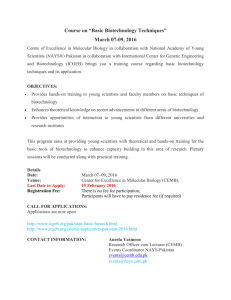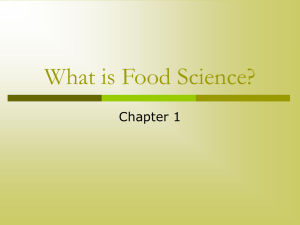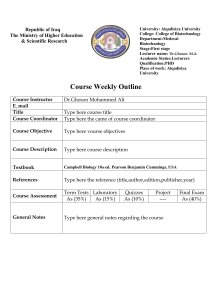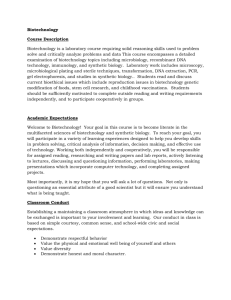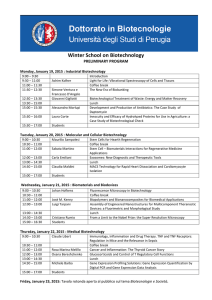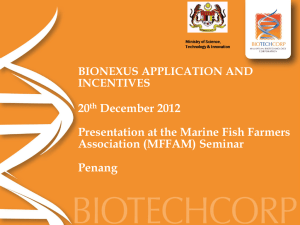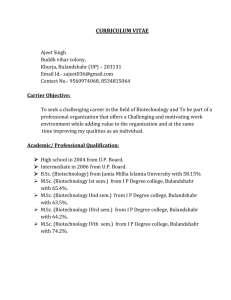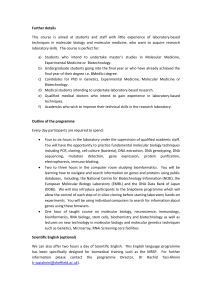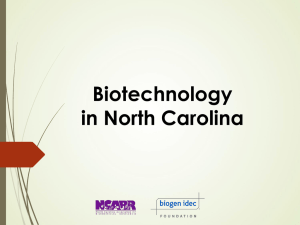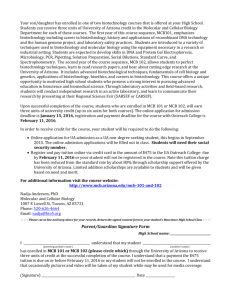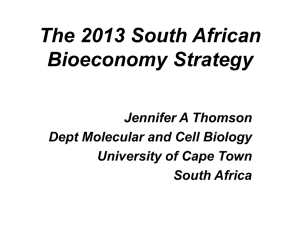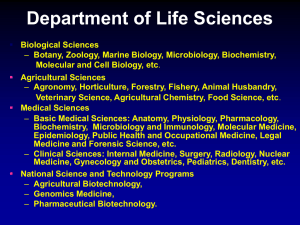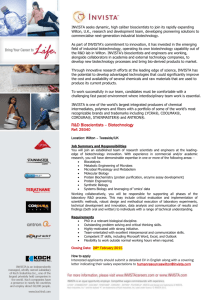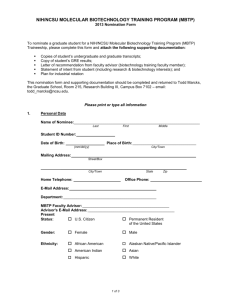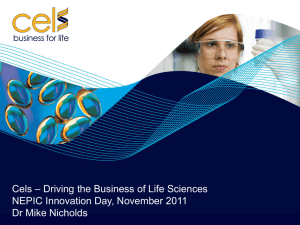What is Biotechnology
advertisement
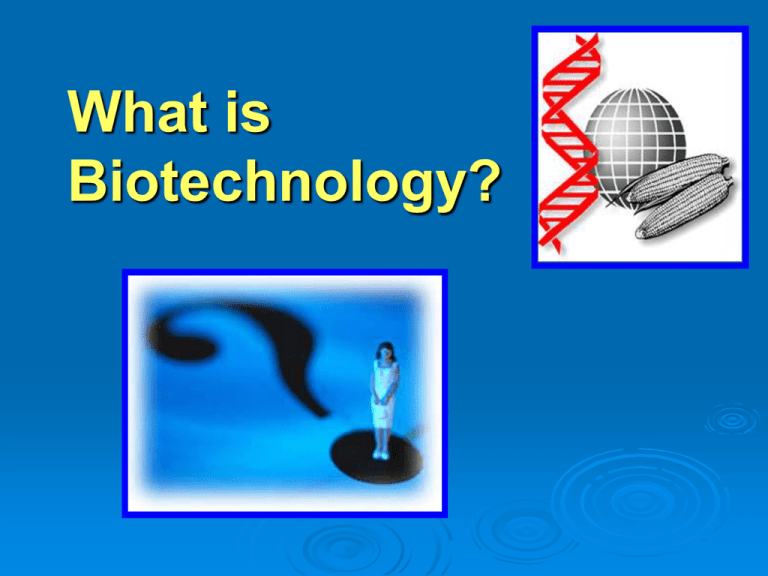
What is Biotechnology? Biotechnology Break it down to the root words and what do you get? “The use of living organisms to solve problems or make useful products.” Electron microscope photograph of yeast cells Biotechnology We have been using Biotechnology for thousands of years. The ability of microorganisms to produce acids and gasses as a result of normal cell metabolism has been taken advantage of to make new and exciting foods for generations. Can you think of some examples of such products? Biotechnology Bread Cheese Beer and Wine Biotechnology For years humans have been also been manipulating the genetic makeup of organisms to make more useful products. For example: Peas, Corn, Domesticated farm animals (Cows, sheep, etc.) The Biotechnology Revolution So why are we talking about a Biotechnology revolution? Why are you in this class? What’s so New? Our knowledge of cell and molecular biology has reached a point where we can manipulate organisms at the molecular level. “New” Biotechnology There are now several thousand companies that have been born to take advantage of the new techniques and knowledge available to biologists to create products that are useful to human society. A collection of Technologies & Skills Biotechnology uses a collection of scientific skills mixed with Sales, Marketing, Legal, Regulatory, and Human Resource skills Biotechnology research Disciplines Biochemistry Cell Biology Molecular Biology Microbiology Genetics Immunology Engineering Materials science Computer science Mathematics Biotechnology Applications Medical Diagnostic Therapeutics Vaccines Environmental Environmental monitoring Bioremediation Pollution prevention Agriculture Crop yield Animal Health Food Quality Genetic Engineering The core of this class will focus on the biology and tools of genetic engineering Isolation of genes with a specific (useful) function. Insertion of that gene into an organism that will transcribe and translate that product. Expression of the gene at high volume to make a product E.g. Insulin Bioinformatics Is the use and organization of information about biology. A fusion of Computer science, mathematics, and molecular biology. Whole genomes can be sequenced in days. Massive amounts of data available e.g. at: (http://www.ncbi.nlm.nih.gov/) Comparisons of sequences Analysis of Protein structures Correlation of marker sequences with disease or reaction to drugs. Interesting Links DNA Chip Technology http://www.sumanasinc.com/webcontent/animations/content/dnachip s.html Glow-pig: http://www.youtube.com/watch?v=1Y1d2-ObxPQ Heart of stem-cells: http://www1.umn.edu/umnnews/Feature_Stories/Researchers_creat e_a_new_heart_in_the_lab.html (video) http://www.startribune.com/video/13711842.html Super-carrot: http://news.bbc.co.uk/2/hi/health/7188969.stm Curing deafness: http://news.bbc.co.uk/2/hi/health/7582640.stm Artificial life: http://news.bbc.co.uk/2/hi/science/nature/7203186.stm



